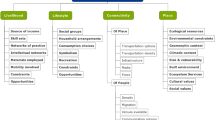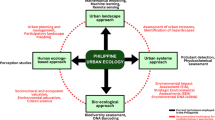Abstract
The citizen science paradigm and the practices related to it have for the last decade called a wide attention, beyond academics, in many application fields with as a result a significant impact on discipline-specific research processes and on information sciences as such. Indeed, in the specific context of minor heritage (tangible and intangible cultural heritage assets that are left aside from large official heritage programmes), citizen-birthed contributions appear as a major opportunity in the harvesting and enrichment of data sets. With more content made available on the net by a variety of local actors, we may have reached a moment when collecting and analysing spatio-historical information appears “easier”, with citizens acting as potential (and legitimate) sensors. But is it really “easier”? And if so, at what cost? Having a closer look on practical challenges behind the curtain can avoid turning the above-mentioned opportunity into a lost one. This contribution discusses feedbacks from a research initiative aimed at better circumscribing the difficulties one has to foresee if wanting to harvest and visualise pieces of data on minor heritage collections and then to derive from them spatial, temporal and thematic knowledge. The contribution focuses on four major aspects: a feedback on the information and on the information available, a description grid for factors of imperfection to be anticipated, visual solutions we have experimented in order to support analytical tasks, and lessons learnt in terms of relations between academics and information providers.




















Similar content being viewed by others
References
Blaise, J.Y., Dudek, I., Saygi, G.: Citizen contributions and minor heritage: feedback on modelling and visualising an information mashup. In: Proceedings of the DSAA 2018, IEEE 5th International Conference on Data Science and Advanced Analytics (2018). https://doi.org/10.1109/dsaa.2018.00013
Kienreich, W.: Information and knowledge visualisation: an oblique view. MiaJournal 0(1), 7–17 (2006)
Keim, D., Kohlhammer, J., Ellis, G., Mansmann, F. (eds.): Mastering the information age. Solving problems with visual analytics. Eurographics Association, 2010. Retrieved 04 April 2018 http://diglib.eg.org (2018)
Christoforidis, G., Kefalas, P., Papadopoulos, A.N., Manlopoulos, Y.: Recommendation of points-of-interest using graph embeddings. In: Proceedings of the DSAA 2018, IEEE 5th International Conference on Data Science and Advanced Analytics (2018). https://doi.org/10.1109/dsaa.2018.00013
Quadri, C., Zignani, M., Gaito, S., Rossi, G.P.: On non-routine places in urban human mobility. In: Proceedings of the DSAA 2018, IEEE 5th International Conference on Data Science and Advanced Analytics (2018). https://doi.org/10.1109/dsaa.2018.00013
Gershon, N.: Visualization of an imperfect world. IEEE Comput. Graph. Appl. 18(4), 43–45 (1998)
Koszewski, K.: Visualization of heritage-related knowledge—case study of graphic representation of polish national inventory of monuments in spatial information systems. In: Kepczynska-Walczak, A. (ed.) Envisioning Architecture: Image, Perception and Communication of Heritage, pp. 377–387. Lodz University of Technology, Lodz (2015)
Myers, D., Dalgity, A., Avramides, I.: The Arches heritage inventory and management system: a platform for the heritage field. J. Cult. Herit. Manag. Sustain. Dev. 2, 213–224 (2016)
Le Boeuf, P., Doerr, M., Ore, C.E., Stead, S. (eds.): Definition of the CIDOC Conceptual Reference Model, version 6.2.3 (2018)
Jokar, A.J., Zipf, A., Mooney, P., Helbich, M.: Open-StreetMap in GIScience: Experiences, Research, and Applications. Springer, Cham (2015)
Goodchild, M.F.: Citizens as sensors: web 2.0 and the volunteering of geographic information. GeoJournal 69, 211–221 (2007)
See, L., Mooney, P., Foody, G.M., Bastin, L., et al.: Crowd-sourcing, citizen science or volunteered geographic information? The current state of crowdsourced geographic information. ISPRS Int. J. Geo Inf. 5(5), 55/1–55/23 (2016)
Gautreau, P., Noucher, M.: Sharing platform in digital geographic information: Everything it promise? Justice Spat./Spat. Justice, vol. 10, pp 34 (2016). http://www.jssj.org/article/information-geographique-numerique-et-justice-spatiale-les-promesses-du-partage/. Accessed 10 Oct 2018
Haklay, M.: How good is volunteered geographical information? A comparative study of OpenStreetMap & Ordnance Survey datasets. Environ. Plan. 34(4), 682703 (2010)
Spyratos, S., Lutz, M., Pantisano, F.: Characteristics of citizen contributed geographic information. In: Huerta, J., Schade, S., Granell, C. (eds.): Connecting a Digital Europe through Location and Place. Proceedings of the AGILE’2014 International Conference on Geographic Information Science, Castellón (2014)
Ridge, M. (ed.): Crowdsourcing our Cultural Heritage. Ashgate Publishing Ltd., Farnham (2014)
Noordegraaf, J., Bartholomew, A., Eveleigh., A.: Modelling crowdsourcing for cultural heritage, Museums and the Web: selected papers from an International Conference, Silver Spring, MD: Museums and the Web LLC, pp. 25–37 (2014)
Keinanm, A., MicroPasts, A.: An experiment in crowdsourcing and crowdfunding archaeology. Br. Archaeol. 139, 50–55 (2014)
Freeman, D., Freeman, J.: Use Your Head: the Inside Track on the Way We Think. John Murray, London (2010)
Wiggins, A., Crowston, K.: From conservation to crowdsourcing: a typology of citizen science. In: 44th Hawaii International Conference on System Sciences (HICSS), Kauai, HI, pp. 1–10 (2011)
Aigner, W., Miksch, S., Schumann, H., Tominski, C.: Visualization of Time-Oriented Data. Springer, Human-Computer Interaction Series (2011)
Skeels, M., Lee, B., Smith, G., Robertson, G.: Revealing uncertainty for information visualization. Macmillan Publishers Ltd. 1473-8716 Information Visualization, vol. 9, no. 1, 70– 81 (2010). (on-line) www.palgrave-journals.com/ivs. Accessed 7 Oct 2011
Blaise, J.Y., Dudek, I.: Picturing what others know: towards a dashboard for interdisciplinarity. In: Proceedings of the 14th I-Know International Conference, pp. 15:1–15:8. ACM, New York, NY USA (2014)
Thomson J., Hetzler B., MacEachren A., Gahegan M., Pavel M.: Typology for visualizing uncertainty. In: Proceedings of the SPIE-VDA 2005: SPIE/IS&T, (Conference on Visualization and Data Analysis), 16–20 January 2005, San Jose, CA USA (2005)
Zuk, T., Carpendale, S.: Visualization of uncertainty and reasoning. In: Butz, A., et al. (eds.) SG 2007, LNCS 4569. Springer, Berlin Heidelberg, pp. 164–177 (2007)
Friendly, M.: Visions and re-visions of Charles Joseph Minard. J. Educ. Behav. Stat. 27(1), 31–51 (2002)
Leaflet open-source JavaScript library for mobile-friendly interactive maps (2018). http://leafletjs.com/. Accessed 15 Nov 2018
Munzner, T.: Visualization analysis and design. In: Peters, A.K. (ed.) Visualization Series. CRC Press, London (2014)
Lam, H., Bertini, E., Isenberg, P., Plaisant, C., Carpendale, S.: Empirical studies in information visualization: seven scenarios. IEEE Trans. Vis. Comput. Graph. Inst. Electr. Electron. Eng. 18(9), 1520–1536 (2012)
Beier, S.: Reading Letters: Designing for Legibility, pp. 1–190. BIS Publishers, Amsterdam (2012)
Christian Bastien, J.M., Scapin, D.L.: Ergonomic Criteria for the Evaluation of Human–Computer Interfaces Technical report, N. 156 INRIA (1993)
Keim, D., Andrienko, G., Fekete, J.D., Görg, C., Kohlhammer, J.: Visual analytics: definition, process and challenges. In: Kerren, A., Stasko, J.T., Fekete J.D., North C. (eds.) Information Visualization—Human-Centered Issues and Perspectives. LNCS, vol 4950, pp. 154–175. Springer, Berlin (2008)
Siebes, A.: Data science as a language: challenges for computer science—a position paper. Int. J. Data Sci. Anal. 6, 177–187 (2018). https://doi.org/10.1007/s41060-018-0103-4
Acknowledgements
This research is funded by the Région Provence-Alpes-Côte d’Azur regional authorities and conducted in cooperation with the Mucem (Musée des Civilisations de l’Europe et de la Méditerranée)—authors thank E. De Laubrie and Y. Padilla (Grant Number APO 2015_07733_07736).
Author information
Authors and Affiliations
Corresponding author
Ethics declarations
Conflict of interest
On behalf of all authors, the corresponding author states that there is no conflict of interest.
Additional information
Publisher's Note
Springer Nature remains neutral with regard to jurisdictional claims in published maps and institutional affiliations.
Rights and permissions
About this article
Cite this article
Blaise, JY., Dudek, I. & Saygi, G. Analysing citizen-birthed data on minor heritage assets: models, promises and challenges. Int J Data Sci Anal 10, 81–99 (2020). https://doi.org/10.1007/s41060-019-00194-0
Received:
Accepted:
Published:
Issue Date:
DOI: https://doi.org/10.1007/s41060-019-00194-0




